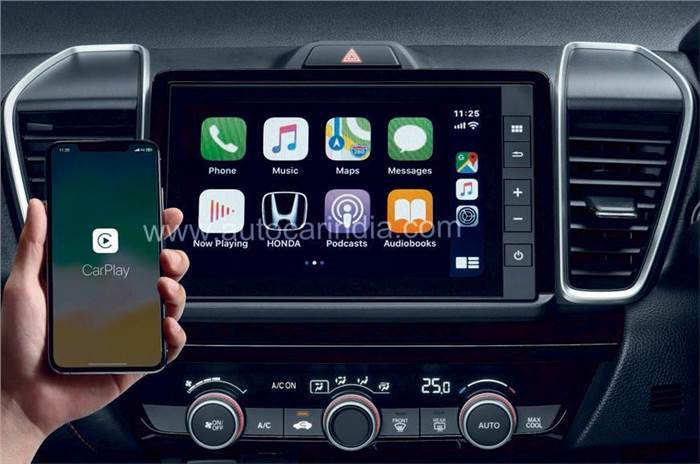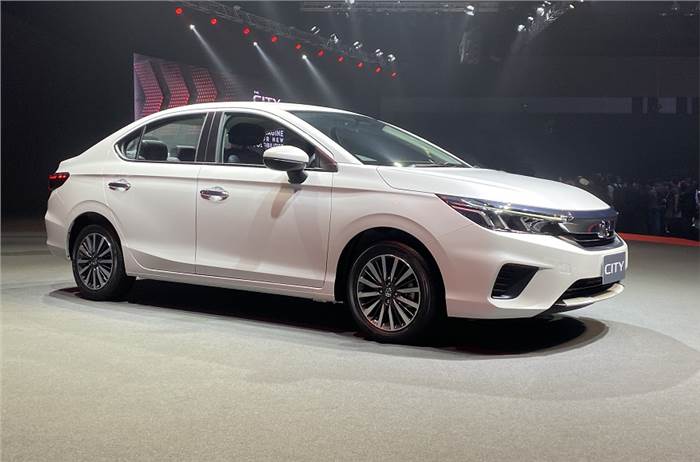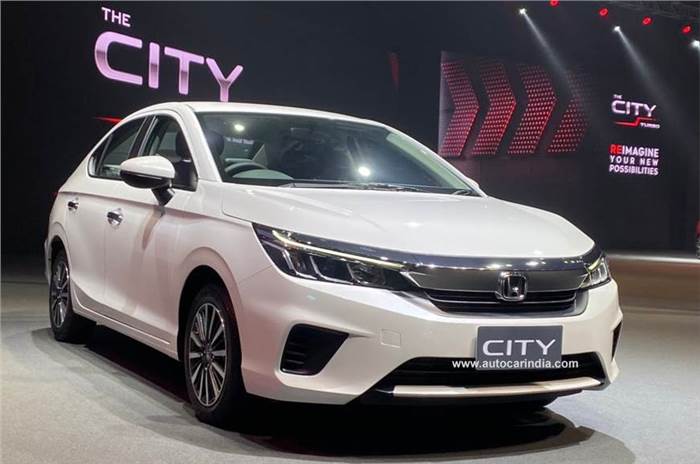After a much-protracted start, Honda’s new City will finally arrive in showrooms soon. Delayed massively due to the coronavirus pandemic, the all-new City will focus on space, comfort, technology and performance. Read on to know why it should be well worth the wait.
It’s all grown up now
The clean-cut look of the 2020 City is a clear departure from the current car. The chrome lip and protruding chin give the new City’s nose plenty of character, and there are other interesting bits too, like the elongated headlights, large jet-fighter-like air intakes, and door-mounted mirrors. The clean European look is carried over to the rear as well.

The new City's stance, however, isn’t sporty. While built on roughly the same wheelbase as the current City, it is a substantial 113mm longer and 53mm wider. As a result, the front and rear overhangs look quite pronounced. What could make matters worse is that the City is likely to have relatively small wheels.
Under the skin, the new Honda City is based on a platform shared with the new Jazz, which itself has evolved from the earlier car.
Ace of space
The neat and clean look of the exterior is carried over to the inside. The dash blends a modern floating centre console with a sophisticated layered look, and it works well. Plastic quality, on the whole, is expected to see an improvement too with more robust knobs and switches.

New petrol engine, same diesel
While a cursory glance at the specs may not reveal much, the latest City’s 1.5 petrol is almost completely new. Displacing 1,498cc, as against the 1,497cc of the earlier one, the new engine (code: L15B) gets more sophisticated hardware and DOHC or twin-cam setup. This will allow it to deliver a cleaner and broader spread of power, but without sacrificing Honda's famed top-end performance. The new engine develops a maximum of 121hp, 2hp more, and torque is also expected to be marginally higher at around 150Nm, versus 145Nm for the current 1.5 engine (code: L15A).
As earlier, the new 2020 City will get a CVT-based automatic, but as the engine, this is different from the one on the current car. Engineered to be more responsive and linear with the accelerator pedal, the new CVT could address a common complaint with the old CVT unit.
Honda will carry on selling the 100hp, 1.5-litre diesel engine. The former, however, won’t get an automatic, and that’s despite the Amaze getting the option. Honda insiders blame low overall diesel sales in the segment for this.
Bells and whistles
Top-of-the-range Citys will get full LED headlamps, six airbags, traction control, electronic stability programme (ESP) and hill-start assist. A low-tyre-pressure warning system has been added, even the fifth passenger gets a three-point seatbelt, and the City ZX will also get Honda’s Lane Watch camera. It will also be the first car in India to get the Alexa Remote which you can speak with and command, and another first will be Honda’s app-based connectivity technology, Honda Connect that can remotely share car details.

A unique inclusion will also be a G-meter, normally seen on sportscars and GTs. As on the outgoing City ZX, leather seats and a powered sunroof will be on offer too. Missing are features like wireless charging and cooled seats, what you get on some of the competition, that would have gone a long way.
At the right price
More focused on luxury and comfort than any other version before, the new 2020 Honda City is a car that promises much. The new petrol engine should deliver plenty of performance, the new City’s cabin will make it a better car to be driven around in, and then when it comes to efficiency, reliability and dependability, it should be just as good.
Prices for the new 2020 City are likely to start at Rs 10.4 lakh (ex-showroom) and go up to around Rs 14.8 lakh at the top, still keeping it competitive with cars like the new Hyundai Verna.
Also see:
Current Honda City to sell alongside new model











Comments
Member Login
Personal Details
No comments yet. Be the first to comment.